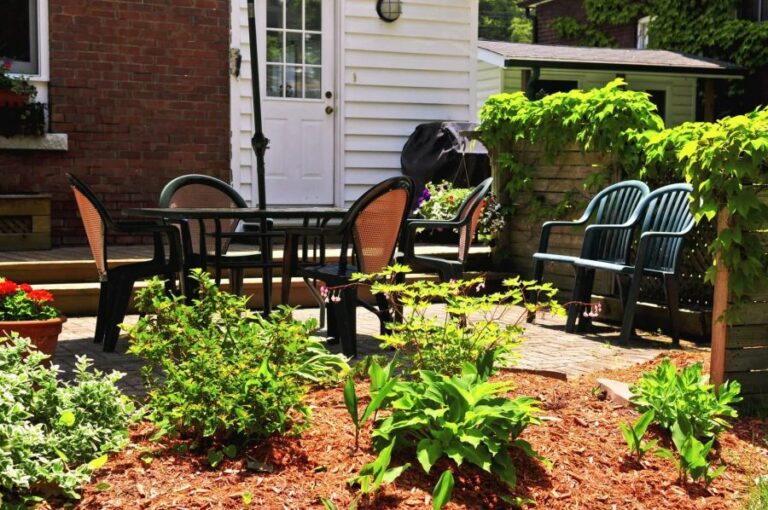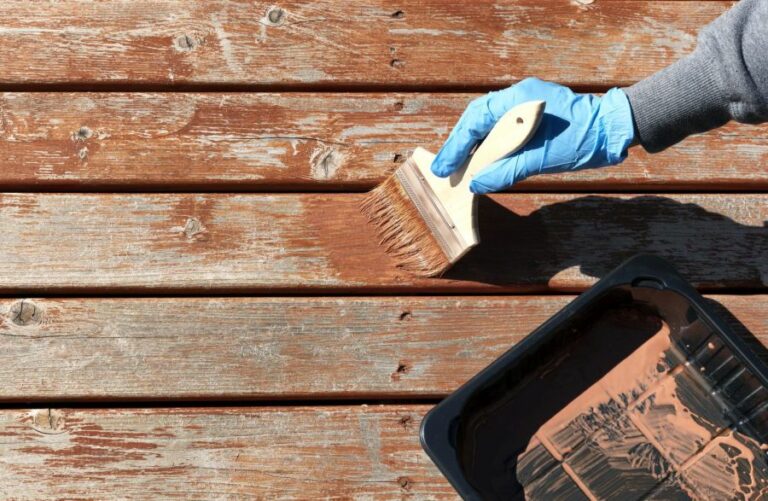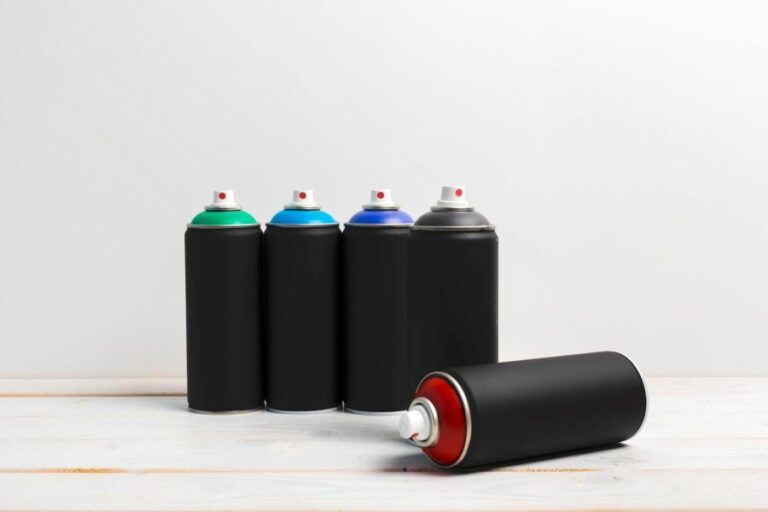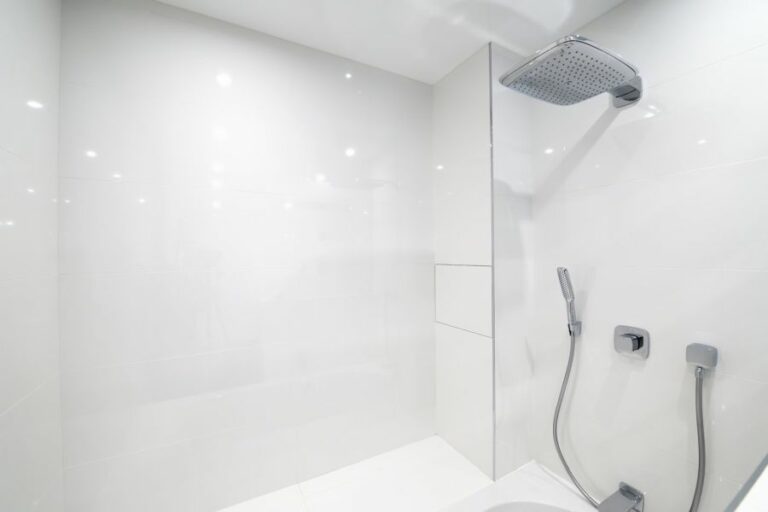Difference Between Indoor And Outdoor Paint. What Pros Say
Are you wondering what sets indoor and outdoor paint apart and which one you should use for your project? We’ve got the answers you’re looking for! Let’s dive into the key differences between these two types of paint, so you can confidently choose the right one for your specific needs. Understanding these distinctions will make your painting experience that much smoother and more successful.
Difference between indoor and outdoor paint:
Indoor and outdoor paints differ primarily in chemical composition, catering to distinct circumstances affecting efficacy and durability. Indoor paints use acrylic-latex or oil-based substances with lower VOC emissions. In contrast, outdoor paints contain additives for weather resistance, offering protection against elements such as rain, sunlight, and temperature fluctuations.

Curious about the differences between indoor and outdoor paint? There’s more that sets them apart than just where they’re applied. Discover the key distinctions, their unique properties, and how to choose the right paint for your projects in our comprehensive guide. Read on to become a paint pro!
Contents
- 1 Distinguishing Between Indoor and Outdoor Paint Varieties
- 2 What are the consequences of using interior paint for exterior surfaces?
- 3 Is it Acceptable to Utilize Exterior Paint for Interior Applications in the Home?
- 4 Analyzing the Distinctions Between Exterior and Interior Paint: Is There a Difference?
- 5 Is Special Exterior Paint Necessary for the Outside of a House?
Distinguishing Between Indoor and Outdoor Paint Varieties
Painting is a popular home improvement technique, both for transforming the interior and exterior of one’s home. While the fundamental application process remains the same, there are crucial distinctions between indoor and outdoor paint.
• Composition: A Key Factor in Paint Varieties
The primary difference between indoor and outdoor paint involves their chemical composition. The two formulations are designed to cater to a distinct set of circumstances, which directly affects their efficacy and durability.
– Indoor Paints: Acrylic-Latex and Oil-Based Options
Indoor or interior paints are typically made with either acrylic-latex or oil-based substances. U.S. Environmental Protection Agency (EPA) recommends using acrylic-latex paint in their Guide to Air Cleaners in the Home, as it emits fewer volatile organic compounds (VOCs), which can lower air quality.
Some popular indoor paint options include:
- Water-Based Acrylic (Latex): This popular paint type is easy to clean, dries quickly, and has low levels of VOCs. It adheres well to most surfaces, including wood, metal, and plaster.
- Oil-Based (Alkyd): Oil-based paints are known for their durability and ability to cover imperfections. However, they take longer to dry, emit a strong odor, and necessitate additional ventilation.
– Outdoor Paints: Weather-Resistant Protection
Exterior or outdoor paint is explicitly crafted to withstand the rigors of external environmental factors, such as rain, sunlight, and temperature fluctuations. These paints generally contain additives like mildew and UV inhibitors, which help the paint endure the elements.
Two popular types of outdoor paint include:
- Exterior Acrylic-Latex: These paints offer exceptional durability and excellent color retention. They are usually resistant to mildew and contain additives that help resist premature fading and peeling.
- Exterior Oil-Based (Alkyd): While not as common as exterior acrylic-latex options, oil-based outdoor paints are known for their excellent adhesion and resistance to cracking. They can provide a smoother finish, but similar to their indoor counterparts, they come with drawbacks, such as long drying time and strong odors.
• Finish Options: A Matter of Gloss and Durability
Both indoor and outdoor paints come in a variety of finishes that impact the paint’s gloss, durability, and cleaning requirements.
– Indoor Paints: A Wide Range of Finishes
For indoor paints, homeowners can choose from several finishes, each with its advantages and drawbacks:
- Flat/Matte: This non-reflective option is an excellent choice for hiding imperfections and providing a smooth appearance; however, it can be challenging to clean.
- Eggshell: Slightly more reflective than flat paint, eggshell finishes can be cleaned more easily and are suitable for use in areas with moderate traffic.
- Satin: Striking a balance between low gloss and sheen, satin finishes are durable, easy to clean, and appropriate for high-traffic areas.
- Semi-Gloss: Resistant to moisture and easy to clean, semi-gloss finishes are common for kitchens and bathrooms.
- Gloss: Although its high-reflective nature highlights surface imperfections, gloss paint is exceptionally durable and easy to clean.
– Outdoor Paints: Gloss and Durability Reign Supreme
Outdoor paints also come in various finishes, though the primary concern with exterior products tends to be durability and ability to endure climate conditions:
- Flat/Matte: Common for exterior siding or brick, flat outdoor paint hides imperfections but may require more frequent touch-ups due to its lower durability.
- Semi-Gloss/Gloss: Offering superior durability, these finishes are often used for front doors, window trim, and railings.
• Practical Application Tips: Best Practices for Indoor and Outdoor Paints
When using different paints for indoor and outdoor applications, consider the following tips for optimal results:
– Indoor Painting Tips
- Ventilation is Key: Make sure to open windows, use fans, or introduce outdoor air when painting indoors.
- Prepare Your Space: Clean surfaces and ensure they are free of dirt, dust, or lingering residue.
- Test Colors: Use sample pots or swatches to test paint colors in the intended space, as lighting can drastically alter how a color appears.
– Outdoor Painting Tips
- Choose the Right Time: Opt for mild weather with temperatures ranging from 50-85F (10-29C). Avoid painting in direct sunlight or humidity, as it can affect the overall finish.
- Proper Surface Prep: Remove loose paint, dirt, and debris with a pressure washer, scraper, or wire brush before painting.
- Primer is Essential: Apply an exterior primer before painting to promote adhesion and improve the paint’s overall performance.
In conclusion, understanding the difference between indoor and outdoor paint can lead to better results, improved durability, and increased satisfaction with the overall appearance of your home.
By considering factors such as paint composition, finishes, and best practices for application, homeowners can make informed decisions and create beautiful indoor and outdoor spaces.
Features | Indoor Paint | Outdoor Paint |
|---|---|---|
Composition | Designed with ingredients that help maintain a stable and durable finish within interior spaces | Contains additives that protect against the elements and resist fading, peeling, and cracking |
Durability | Can last for several years, but not as durable as outdoor paint due to lower presence of protective additives | Highly durable and formulated to withstand harsh weather conditions, UV rays, and other environmental factors |
VOCs (Volatile Organic Compounds) | Typically have lower VOC levels because they are meant for enclosed spaces | May have higher VOC levels, but there are low-VOC outdoor paint options available |
Application | Recommended for use on interior walls, ceilings, and trim | Designed for exterior surfaces such as siding, doors, windows, and outdoor furniture |
Finish | Available in a variety of finishes, including matte, eggshell, satin, semi-gloss, and high-gloss | Commonly available in flat, satin, semi-gloss, and gloss finishes, depending on the intended surface |
What are the consequences of using interior paint for exterior surfaces?
As an experienced painter and decorator, I’d like to share my expertise on why using interior paint outside can lead to problems and poor results. There are several factors to consider, such as the paint’s composition, durability, and the effects of weather conditions.
Knowing the consequences of using indoor paint outdoors can help you avoid potential headaches and costly repairs.
• Composition Differences Between Interior and Exterior Paint
The primary difference between interior and exterior paint lies in their respective formulas. Interior paint is made for surfaces that are not exposed to the elements and is specifically designed for use within the confines of your home.
On the other hand, exterior paint is formulated to withstand harsh outdoor conditions, such as extreme temperatures, UV light, and precipitation.
One of the main differences in composition is the type and amount of resins used. Exterior paint contains more flexible resins that help it expand and contract with temperature fluctuations, while interior paint has more rigid resins for better adhesion to walls and ceilings.
This flexibility is essential for exterior surfaces, as it prevents the paint from cracking and peeling.
– UV Protection in Exterior Paint
Another critical factor to consider is the UV protection that exterior paint provides. The addition of UV blockers in the paint wards off damage and fading caused by the sun’s rays. Interior paint, however, lacks these additives, which can lead to premature fading when exposed to direct sunlight.
– Mold and Mildew Resistance
Exterior paint is formulated to resist mold and mildew growth. This is important, as outdoor surfaces tend to be more prone to these issues due to constant exposure to moisture.
Interior paint does not have these specialized additives, so using it outside may lead to mold and mildew growth, impacting both the appearance and the integrity of the painted surface.
• Durability and Adhesion Issues When Using Interior Paint Outdoors
When you use interior paint on exterior surfaces, you’ll likely experience problems with the durability, adhesion, and overall lifespan of the paint job. The lack of flexible resins and weather-resistant additives found in exterior paint means that interior paint won’t last as long outside.
The paint will likely crack, peel, and fade within a relatively short amount of time.
Interior paint is also less adhesive than its exterior counterpart, meaning it won’t bond as effectively to outdoor surfaces. This can result in the paint not sticking correctly or peeling off in large sections, requiring a complete redo of the paint job.
• The Impact of Weather Conditions on Interior Paint Outdoors
Aside from the disadvantages in durability and adhesion, using interior paint outside may also create issues due to weather conditions.
Humidity, temperature fluctuations, and precipitation such as rain, snow, and frost can all have detrimental effects on an interior paint job when applied to outdoor surfaces.
- Humidity: High humidity levels can affect the drying time of interior paint applied outdoors, leading to an uneven finish and increased susceptibility to moisture-related issues such as mold, mildew, and blistering.
- Temperature fluctuations: As mentioned earlier, the resins in interior paint do not have the same flexibility as those in exterior paint. When exposed to dramatic temperature changes, interior paint will crack and peel as it tries to expand and contract.
- Precipitation: Rain, snow, and frost can cause interior paint to blister and peel once applied to outdoor surfaces. This not only looks unsightly but can also result in damage to your home’s exterior, necessitating costly repairs.
• Recommendations and Considerations
As a painter and decorator with hands-on experience, I cannot recommend using interior paint on outdoor surfaces. The risks and potential problems far outweigh any possible benefits, such as using leftover paint to save money.
The correct exterior paint is a worthwhile investment, which will provide long-lasting protection, durability, and aesthetics to your home.
In conclusion, using interior paint outside can lead to a host of issues, including poor adhesion, cracking, peeling, fading, and susceptibility to damage from weather conditions.
To ensure a professional, long-lasting, and protective paint job for your home’s exterior, always choose a high-quality exterior paint designed specifically for outdoor use. And when in doubt, consult a professional painter for advice and recommendations.
You can find additional information on the subject through reputable sources such as The U.S. Department of Energy to make an informed decision for your home painting project.
Issue | Description |
|---|---|
Durability Issues | Interior paint is not designed to withstand harsh outdoor conditions, which can lead to cracking, peeling, and rapid wear. |
Fading | Interior paints are not formulated to resist UV rays or extreme sunlight, which can result in significant color fading. |
Mildew and Mold Growth | Exterior paints contain specific additives to inhibit mildew and mold growth. Using interior paint outside can fail to prevent the growth of mold and mildew. |
Swelling and Warping | Interior paint can absorb moisture from rain, dew, or humidity when used outside. This can cause the paint to swell and eventually warp or crack. |
Improper Adhesion | Interior paint may not adhere properly to exterior surfaces, leading to bubbling, peeling, or flaking over time. |
Is it Acceptable to Utilize Exterior Paint for Interior Applications in the Home?
Exterior paint is created for outdoor use, where it must endure harsh weather conditions and various other elements. Naturally, homeowners often wonder if it’s safe or effective to use exterior paint indoors.
• Difference Between Interior and Exterior Paints
Before we delve into the specifics of using exterior paint inside the house, let’s briefly compare its composition to that of interior paint.
– Interior Paints:
- Durability: Generally, interior paint is formulated to be more durable, allowing it to withstand repeated scrubbing and cleaning. This is essential for rooms where spills, splashes, and frequent touching of walls can occur, such as kitchens and bathrooms.
- Chemical composition: Interior paint is made with resins that have low Volatile Organic Compounds (VOCs) levels. VOCs are released as the paint dries and can have negative health effects in high concentrations.
- Finishes: Interior paints often come in a variety of sheens, from flat to glossy, allowing homeowners to choose the most suitable finish for their walls.
– Exterior Paints:
- Weather resistance: Exterior paint is formulated to resist harsh outdoor conditions like temperature fluctuations, UV exposure, and moisture.
- Chemical composition: Exterior paint often contains more VOCs than interior paint because it needs to adhere well to various surfaces, withstand the elements, and resist peeling, chipping, or fading.
- Flexibility: Exterior paint is designed to expand and contract with changes in temperature or moisture without cracking or peeling.
• Risks of Using Exterior Paint Indoors: Health and Environmental Concerns
High levels of VOCs found in exterior paint might pose health risks and environmental concerns when used indoors. Some of the potential issues include:
- Air quality: VOCs are released as the paint dries, leading to an unpleasant odor and possible harm to indoor air quality.
- Respiratory irritation: In high concentrations, VOCs can cause respiratory problems, irritation to the eyes, nose, or throat, headaches, and dizziness. People with asthma, allergies, or chemical sensitivities are particularly vulnerable.
- Environmental impact: The manufacturing process of exterior paint with high VOCs emits air pollutants, which contribute to smog and other environmental problems.
• Best Practices for Using Exterior Paint Indoors
Due to the risks mentioned above, it is generally not recommended to use exterior paint indoors. However, if you must proceed, here are some guidelines to follow:
- Choose a low-VOC exterior paint: Select an exterior paint with low VOC levels to reduce potential harm to indoor air quality.
- Ventilate well: Ensure proper ventilation during and after the painting process to allow VOCs to dissipate quickly.
- Cure time: Allow ample time for the paint to dry completely and the odor to dissipate.
- Use caution in sensitive areas: Avoid using exterior paint in bedrooms, nurseries, or any areas where people spend significant amounts of time, particularly if they suffer from asthma or allergies.
- Consider alternatives: For indoor projects requiring greater durability or moisture resistance, there are specially formulated interior paints available, such as kitchen and bathroom paint or products labeled for both interior and exterior use.
• Conclusion
While exterior paint does have its noteworthy benefits (weather resistance and flexibility), the health and environmental risks generally outweigh these advantages when it comes to using it indoors.
Following best practices or opting for alternatives designed specifically for indoor use will help create a safe and healthy living environment.
For further information on the safety of using exterior paint indoors, consult resources from reputable organizations like the Environmental Protection Agency (EPA) or the American Lung Association.
Analyzing the Distinctions Between Exterior and Interior Paint: Is There a Difference?
Both interior and exterior paints come in various colors and finishes, but if you were to look at their labels or read their specifications, you would see they significantly differ in their compositions and unique features.
While they may appear similar on the surface, the differences between these paints have important implications for their application, durability, and overall performance.
• Components of Paint and Their Purposes
Before diving into the differences between interior and exterior paints, it’s essential to understand the three main components that make up paint: pigment, binder, and solvent.
Pigments provide color and opacity, binders hold the pigment together and attach it to the surface, and solvents are the liquid component that evaporates as the paint dries, leaving behind a solid coating.
– Pigments
Pigments in both exterior and interior paints can be organic or inorganic, synthetic or natural. In general, exterior paints contain more robust and UV-resistant pigments since they are exposed to harsh weather conditions and direct sunlight.
These resistant pigments help prevent fading and discoloration, ensuring the paint’s longevity and maintaining its appearance over time.
– Binders
Binders play a significant role in determining the properties of paint, such as adhesion, flexibility, and resistance to environmental elements. Exterior paints commonly use binders with increased flexibility to accommodate the expansion and contraction of surfaces due to temperature fluctuations.
Conversely, interior paints require less flexibility, but greater resistance to scrubbing and washing, as surfaces within the home typically experience more wear and tear from daily use.
– Solvents
The solvent used in paint affects its drying time and workability. While both exterior and interior paint solvents can vary, exterior paints tend to have a longer working time to help paint applicators lay down an even coat without a visible brush or roller marks.
Interior paints, on the other hand, typically dry faster to minimize disruption to homeowners, as well as produce lower volatile organic compound (VOC) emissions, ensuring better indoor air quality.
• Durability and Longevity
One of the critical factors to consider when choosing between exterior and interior paints is durability. As mentioned earlier, exterior paints must withstand harsh weather conditions, UV radiation, temperature fluctuations, and potential mildew growth.
Thus, they have been specifically formulated to resist chipping, peeling, and fading.
On the other hand, interior paints need to maintain their appearance under constant exposure to human activity, frequent cleaning, and possible staining.
While exterior paints may appear to be more durable, using them indoors can lead to various issues, such as poor adhesion or uneven sheen, as they are not designed to withstand regular washing or resist staining.
• Health Considerations
VOCs in the paint can cause short-term and long-term effects on indoor air quality and human health. Interior paints, particularly those labeled as low-VOC or zero-VOC, have been developed to minimize these emissions and maintain a healthy indoor environment. Exterior paints may contain higher VOC levels, making them unsuitable for indoor use.
• Expert Recommendations
Based on years of experience, we recommend the following when selecting and using interior or exterior paints:
- Always choose the paint specifically formulated for either interior or exterior application, as indicated on the product label.
- Consider the specific conditions and requirements of your painting project, such as weather exposure, surface expansion, and contraction or expected wear and tear.
- Consult the paint manufacturer’s guidelines for application, drying times, and recommended number of coats, as these factors may differ between interior and exterior products.
- In areas prone to mildew or mold growth, opt for paints that contain mildew-resistant additives.
- Prioritize low-VOC or zero-VOC interior paints to ensure healthy indoor air quality.
For additional information on selecting the appropriate paint for your project, the U.S. Environmental Protection Agency (EPA) offers guidance on VOCs in paint and selecting more environmentally friendly options.
In conclusion, understanding the differences between exterior and interior paints is critical to ensure the success and longevity of your painting project.
The unique formulations of these paints are designed to optimize their performance in specific applications and conditions, guaranteeing a polished finish and lasting results.
Exterior Paint | Interior Paint |
|---|---|
Designed for outdoor use on surfaces exposed to weather conditions | Designed for indoor use on walls, ceilings, and other surfaces not exposed to weather |
Contains additives that protect against UV rays, mold, and mildew | Does not contain the same protective additives found in exterior paint |
Usually more durable and resistant to peeling, chipping, and fading | Softer and more susceptible to wear, but provides a smoother finish |
Can have a higher concentration of volatile organic compounds (VOCs) | Typically has lower VOC levels to minimize indoor air pollution |
Is Special Exterior Paint Necessary for the Outside of a House?
Painting the exterior of your house is a significant investment, both in terms of time and money. A fresh coat of paint can not just transform the appearance of your home but also protect it from various external elements.
This compels homeowners to choose the right type of paint for their house exterior. So, do you need specific paint for the outside of your house? Let’s dive right in!
• Characteristics of Exterior Paint
Before we delve into the details of why you should use specific paint for your house’s exterior, let’s understand the characteristics of exterior paint that make it different from interior paint options.
– Weather Resistance
Exterior paint is specially designed to withstand varying weather conditions, like rain, snow, wind, and heat. It acts as a protective barrier against the harshest of weather conditions to prevent the exterior surface of your house from getting damaged.
– UV Resistance
Ultraviolet rays from the sun can cause significant fade and deterioration in the paint color. Exterior paint has additives and higher-quality pigments that resist the effects of UV light, ensuring your paint job lasts longer and doesn’t lose its charm.
– Mold and Mildew Resistance
The presence of mold and mildew on your house’s exterior walls can pose health risks and look unsightly. Exterior paint contains special additives that prevent the growth of mold and mildew, ensuring that your house remains safe and aesthetically pleasing.
– Flexible and Breathable
Unlike interior paint, exterior paint has a certain level of elasticity to it. This enables the paint to expand and contract alongside the material it is painted, be it wood or concrete.
This flexibility prevents cracks and chips in the paint. Exterior paint is also breathable, allowing moisture to escape without damaging the surface.
With these characteristics in mind, let’s dive deeper into why you should use specific paint for your house’s exterior.
• Advantages of Using Special Exterior Paint
– Longevity and Durability
One of the primary reasons many experts recommend using exterior paint for the outside surfaces of your house is its durability. The high-quality resins and additives mentioned earlier help the paint endure various climate conditions and wear and tear over time.
While using interior paint for your exterior may be cheaper in the short term, you might find yourself repainting much more frequently, leading to higher overall costs and time.
– Effortless Application and Maintenance
Exterior paint is formulated for effortless application on various surfaces, including wood, concrete, and stucco. This ease of application allows you to achieve an even and flawless finish on your house’s exterior.
In addition to this, exterior paint demands low maintenance. Its resistance to dirt and grime buildup makes it easy to clean with just soap and water. This low-maintenance feature ensures your house looks clean and well-maintained throughout its lifespan.
– Increase Your Home’s Curb Appeal and Value
Refreshing your home’s exterior with the right paint can substantially enhance its aesthetic appeal. This, in turn, can boost the property value and make it more inviting for potential buyers.
A concentrated effort has been made by paint manufacturers to produce exterior paints in vivid colors and improved finishes. This offers homeowners an extensive palette of colors to choose from, ensuring that their home stands out in the neighborhood.
– Environmentally Friendly
Several exterior paint options available in the market today are low in VOC (volatile organic compounds) or VOC-free. VOCs are chemicals found in regular paint that emit harmful fumes and can be detrimental to the environment and the health of your family.
Selecting a low-VOC or VOC-free exterior paint contributes towards making your house environmentally friendly and safe for your family.
• Expert Recommendation
The evidence is quite apparent using exterior paint specifically designed for the purpose of painting your home’s exterior is a wise choice. It offers numerous advantages in terms of durability, protection, aesthetics, and environmental responsibility.
If you are looking for additional resources and guidance, the U.S. Environmental Protection Agency (EPA) provides valuable information on indoor air quality and the safety aspects of various paints.
In conclusion, investing in high-quality exterior paint is essential to ensure the long-term beauty and maintenance of your home. Making the right choice in paint can save you time, money, and effort in the long run while also contributing to a healthier living environment for you and your loved ones.
Question | Answer |
|---|---|
Do you need special paint for outside of house? | Yes, it is recommended to use exterior paint specifically designed for outdoor surfaces as it has higher durability, weather resistance, and protection against fading and damage caused by UV rays. |







